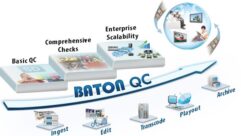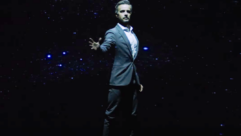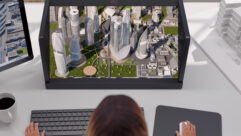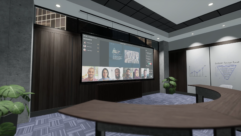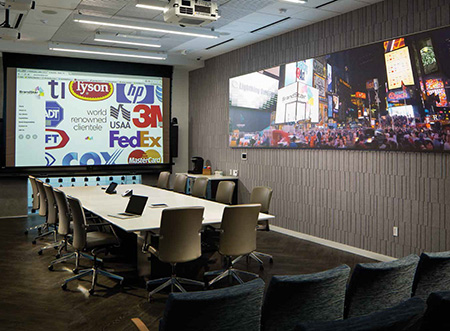

Imagine this: You’re designing and installing an AV system while millions of Lifetime Networks and FOX Business viewers follow along. That was the gig when BrandStar decided to move into a new building, develop an entirely new AV platform for their employees and clients, and document the process as a TV series called Office Spaces—a spinoff off the company’s hit series Designing Spaces.
BrandStar is a global integrated marketing company and production studio. Founded by Mark Alfieri and Doug Campbell in 1994 as O2 Media, and based in Deerfield Beach, FL, it offers services such as content marketing, agency and production services, and social media marketing for clients including Tyson, ATT, HP, FedEx, Citi, Cox, 3M, MasterCard, Kraft, ADT and more. The company also produces nine successful shows for Lifetime, Fox Business and the History Channel such as The Balancing Act, Designing Spaces, Military Makeover, and most recently Office Spaces, which devoted its first season to BrandStar’s own move and the design and build of their highly technological office.
Kalyn Rothaus is interior designer behind the new office (and the Office Spaces on-air host). She explains that as BrandStar grew, it had sprawled organically and inefficiently in a large but stagnant space, filling four floors linked by a tediously slow elevator. The space was not supporting collaboration, spontaneity, or creativity the way it could. “Over the years, they had gradually become siloed and disconnected from each other,” Rothaus says. It’s exactly the sort of thing she lives to fix.
The company had purchased a new building that Rothaus would design and fit out specifically for them. The new building reduced their square footage essentially in half to about 11,500 square feet but also presented the opportunity to completely modernize the environment for the digitally-focused company. Founder Alfieri wanted the space to have the “latest and greatest technology,” Rothaus recalls. “He wanted the office space of the future. That was the design challenge.” As a practical matter, the biggest challenge was to put a large staff into relatively compact quarters and make the space laser-efficient and collaborative.
“The first thing I consider as a designer is function, and the second thing I consider is form,” Rothaus says. She spent several months working side by side with the BrandStar team, learning their workflows and culture, and understanding how each room would need to function. Further, as the host of Office Spaces, she was intimately involved with the system design and installation and was there to help tweak along the way. She was onsite regularly, which enhanced the already tight collaboration among contractors throughout the course of the design/build. This led to those moments of serendipity and problem solving where technical, mechanical, and aesthetic expertise come together.
As a production company, BrandStar already had relationships with various video technology manufacturers. So when systems designers and integrators Jason and Justin Gelfand of Complete Integrated Technology joined the project, some early equipment choices had already been made, and in some cases procured. Their challenge was to integrate the chosen gear into a system design, add additional components, and tie it all together with elements including control, signal distribution and custom programming and interfaces. And then of course install it in front of the cameras and viewers at home.

The social media command center not only supports the workflow of BrandStar’s digital experts, it makes a powerful visual statement about that expertise.
BrandStar was their first time on TV. But it was definitely not their first AV system. Twins Jason and Justin Gelfand founded Complete in their garage as a car audio shop while they were in high school. The brothers built the business while they got their degrees in programming and business respectively. They expanded into AV, as well as securing their full electrical contactor license and expertise in energy management, which makes up a significant part of their non-AV business Jason says.
The key challenge on the BrandStar job was achieving the desired plant-wide video distribution with sources going to the exterior, lobby, conference and work rooms. The displays include Smart whiteboards, Barco projectors, videowalls, a 20-foot edge-blended screen, a Planar Mosaic system, and a wealth of PCs and TVs.
The heart of the distribution system is a combination of ZeeVee products—the Zee- Vee HD bridge products as well and the new IP-based ZyPer products providing a blended distribution environment. On the IP network, applications include video distribution over fiber to digital signage devices, executive 4K conference room displays, PC desktops, Barco 4K Projectors and a Planar Mosaic. On the coax network, input from the cable network, digital signage and live studio feeds can be distributed to 50 HD TVs throughout the facility, which also carry the corporate messaging channel which is created with Barco X2O.
The BrandStar installation was one of the very early systems to incorporate ZeeVee’s new ZyPer, which distributes up to 4K over standard 10Gb Ethernet. “Where we had distances to deal with and uncompressed 4K we used the ZyPer over fiber,” Jason Gelfand says. “For the HD sources it was simple and economical to use coax.” In both cases, the ZeeVee products function as matrix switches, following a trend as AV over IP technology replaces hard-iron matrix switches. “It’s a big advantage.” Gelfand says of the flexibility of the ZeeVee range. “You can support just about any input device and deliver content to almost any output device, over multiple networks irrespective of distance.”
“We’d used ZeeVee products for many years, but this was our first time with the new ZyPer.” Gelfand says they received great support and collaboration from ZeeVee’s application engineers and also from Leviton who helped smooth the integration with the control interface (the Gelfands are longtime BitWise users for control). He says the experience further increased his confidence in the virtual matrix approach and gave him a new set of tools that he can specify for future applications.
In designing the space and the systems, everyone involved says it was important to take into consideration both the public-facing and internal uses of displays. As a broadcast company, BrandStar wants to present the highest quality video. And for them, video is the currency of communication. When customers arrive for meetings they are greeted with their own logos displayed prominently on the lobby screens and through the building on the many different screens. Inside the main conference room, a large motorized screen does the same and then flies out to reveal the Smart whiteboards, which support the meeting itself. “I thought of it like a curtain,” Rothhaus says. Indeed the designer used several opportunities to combine mechanical and digital design. Another example is the two-sided trophy wall, which displays BrandStar’s many awards and also serves as a clever support for the Smart digital whiteboards.
For recording meetings and training sessions there are five Sony PTZ cameras and ClearOne beamforming mics.
One of the most important rooms in the building is the social media command center where employees can follow the social media feeds for client brands in real time. Both Gelfand and Rothaus say this room also serves a public-facing purpose as well. “The company wanted to really show off its expertise in social media, so the room really makes a statement,” Gelfand says. “When people walk by they go ‘whoa what’s going on in there?’” Rothaus adds.
Under the hood, the room’s 12 55” TVs, and two Planar quad-view displays are managed by a ShinyBow 16×16 HDMI matrix switcher, served by two custom computers with 12 outputs each. The ZeeVee feeds come into the switcher as well, along with the corporate messaging system. Leviton Bitwise is the control interface, which provides the users with simple iPad control for choosing and managing sources. “I wrote some big macros as well so they can easily pick and direct groups of sources,” Gelfand says. “Its probably way more flexibility than they’ll ever need.”
“This was a unique experience of being side by side with these people shooting a TV show and also creating a space for them,” Rothaus sums up. She credits the results to the collaboration with her client, the Gelfands, the construction team, and also the team at Wiring.com who help with the “sea of blue cables” needed for the project. (“There really was an unbelievable amount of cable,” Gelfand confirms.)
“Did we shift the culture?” Rothaus says. “Yes, 100%. All I could think about how do I help them communicate and work together and meet people within the building, and meet someone new and make something new happen. We gave them a really modern, modular and flexible space—everything’s on casters, they can reorganize themselves however they want and the technology will move with them.”
Yet, as a parting comment she shares a detail that illustrates just how complex it is to anticipate people’s wants and needs. “Today I got a request can we buy clocks for the walls. Every monitor in that building could display the time, there are dozens of devices all over that building that can display the time….” She trails off bemused. Sometimes, it seems, even digital natives just want a little analog.
PRODUCT AT WORK:

ZEEVEE ZYPER4K
The ZeeVee ZyPer4K distributes HD-UHD/4K video from any source to an unlimited number of displays using ZyPer4K encoder and decoder modules and off-the-shelf 10Gb Copper or Fiber Ethernet switcher—nothing proprietary. It has virtually unlimited scalability by avoiding the input/output restrictions and fixed matrix architecture of conventional switching solutions. The ZyPer is driven by the AptoVision BlueRiver NT chipset which allows extension and switching of 4K video over Ethernet with zero frame latency.



